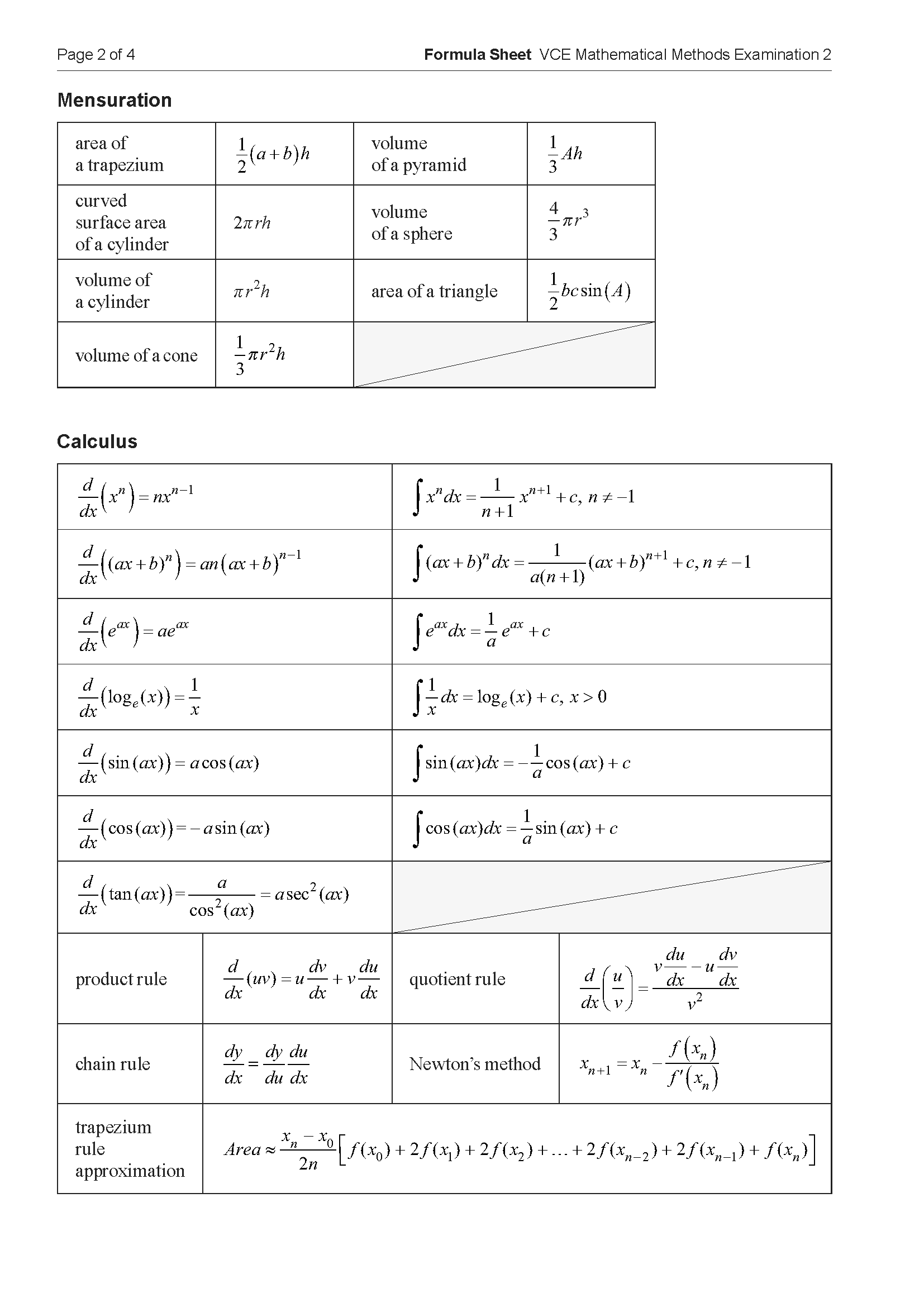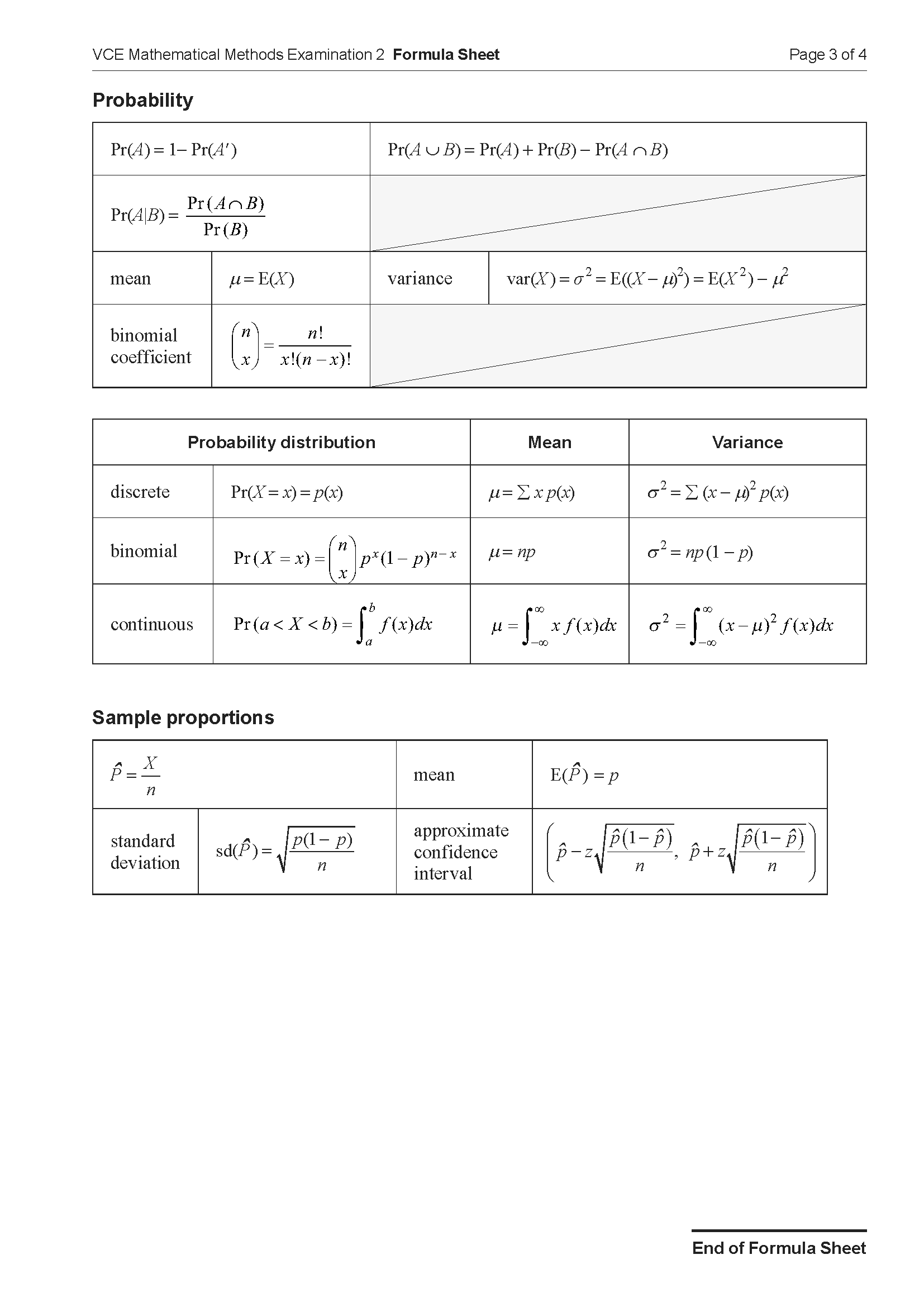VCE Maths Methods Pseudocode Mini Test
Number of marks: 9
Reading time: 2 minutes
Writing time: 13 minutes
Section A – Calculator Allowed
Instructions
• Answer all questions in pencil on your Multiple-Choice Answer Sheet.
• Choose the response that is correct for the question.
• A correct answer scores 1; an incorrect answer scores 0.
• Marks will not be deducted for incorrect answers.
• No marks will be given if more than one answer is completed for any question.
• Unless otherwise indicated, the diagrams in this book are not drawn to scale.
Consider the algorithm below which prints the roots of the cubic polynomial \( f(x) = x^3 - 2x^2 - 9x + 18 \).
The algorithm prints in order:
- A. -3, 3, 2
- B. -3, 2, 3
- C. 3, 2, -3
- D. 3, -3, 2
The following algorithm applies Newton’s method using a For loop with 3 iterations...
\[ \begin{array}{l} \textbf{Inputs:} \quad f(x), \text{ a function of } x \\ \quad\quad\quad\quad df(x), \text{ the derivative of } f(x) \\ \quad\quad\quad\quad x_0, \text{ an initial estimate} \\ \\ \textbf{Define } \texttt{newton}(f(x), df(x), x_0) \\ \quad \textbf{For } i \text{ from } 1 \text{ to } 3 \\ \quad\quad \textbf{If } df(x_0) = 0 \textbf{ Then} \\ \quad\quad\quad \textbf{Return } \text{``Error: Division by zero''} \\ \quad\quad \textbf{Else} \\ \quad\quad\quad x_0 \leftarrow x_0 - f(x_0) \div df(x_0) \\ \quad \textbf{EndFor} \\ \quad \textbf{Return } x_0 \end{array} \]The return value of the function newton(x³ + 3x − 3, 3x² + 3, 1) is closest to
- A. 0.83333
- B. 0.81785
- C. 0.81773
- D. 1
- E. 3
Newton's method is being used to approximate the non-zero \(x\)-intercept of the function with the equation \(f(x) = \frac{x^3}{5} - \sqrt{x}\). An initial estimate of \(x_0 = 1\) is used.
Which one of the following gives the first estimate that would correctly approximate the intercept to three decimal places?
- A. \(x_6\)
- B. \(x_7\)
- C. \(x_8\)
- D. \(x_9\)
- E. The intercept cannot be correctly approximated using Newton's method.
The algorithm below, described in pseudocode, estimates the value of a definite integral using the trapezium rule.
Consider the algorithm implemented with the following inputs.
trapezium(\(\log_e(x)\), 1, 3, 10)
The value of the variable sum after one iteration of the While loop would be closest to
- A. 1.281
- B. 1.289
- C. 1.463
- D. 1.617
- E. 2.136
Consider the algorithm below, which uses the bisection method to estimate the solution to an equation in the form \(f(x) = 0\).
The algorithm is implemented as follows.
bisection(\(\sin(x)\), 3, 5, 2)
Which value would be returned when the algorithm is implemented as given?
- A. -0.351
- B. -0.108
- C. 3.25
- D. 3.5
- E. 4
One way of implementing Newton's method using pseudocode, with a tolerance level of 0.001, is shown below.
The pseudocode is incomplete, with two missing lines indicated by an empty box.
Which one of the following options would be most appropriate to fill the empty box?
- A. If next_x - prev_x < 0.001 Then
Return prev_x - B. If next_x - prev_x < 0.001 Then
Return next_x - C. If prev_x - next_x < 0.001 Then
Return next_x - D. If -0.001 < next_x - prev_x < 0.001 Then
Return prev_x - E. If -0.001 < next_x - prev_x < 0.001 Then
Return next_x
End of Section A
Section B – No Calculator
Instructions
• Answer all questions in the spaces provided.
• Write your responses in English.
• In questions where a numerical answer is required, an exact value must be given unless otherwise specified.
• In questions where more than one mark is available, appropriate working must be shown.
• Unless otherwise indicated, the diagrams in this book are not drawn to scale.
Newton's method is used to estimate the x-intercept of the function \(f(x) = \frac{1}{3}x^3 + 2x + 4\).
a. Verify that \(f(-1) > 0\) and \(f(-2) < 0\). 1 mark
b. Using an initial estimate of \(x_0 = -1\), find the value of \(x_1\). 2 marks
End of examination questions
VCE is a registered trademark of the VCAA. The VCAA does not endorse or make any warranties regarding this study resource. Past VCE exams and related content can be accessed directly at www.vcaa.vic.edu.au

